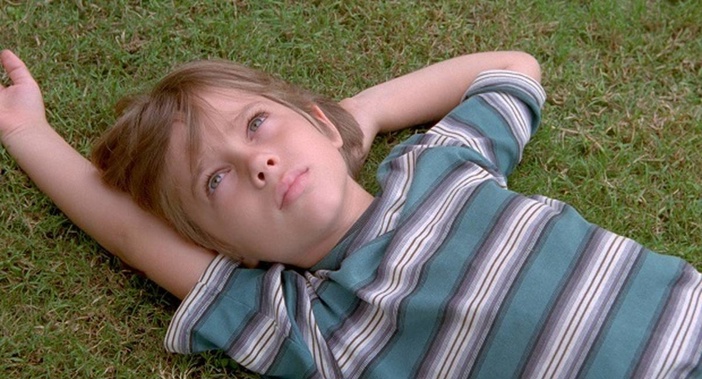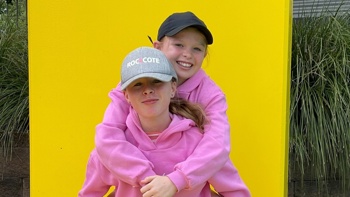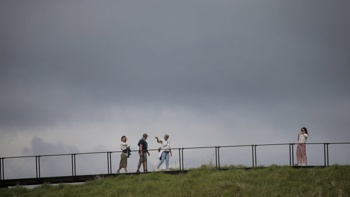
As the film world prepares to leave the childish things of summer behind and welcome the more serious, artistically ambitious movies of festival and awards season, it's an opportune moment to consider the Canon: that list of revered films that helped form cinematic language, broke it open, captured not only their own zeitgeist but proved wisely prescient, and have stood the test of history to remain mini-master classes in aesthetics, technique, grammar and taste.
For the most part, the Canon has remained an unchanged list of cinema's most revered titles; the last time it was even slightly upset was in 2012, when the respected film journal Sight & Sound announced that its Greatest Films of All Time poll of programmers, film professionals and academics had put Alfred Hitchcock's 1958 fever dream "Vertigo" at the top of the list, upending longtime pride-of-place holder "Citizen Kane."
That blip aside, the rest of the list was and continues to be a largely predictable - and unquestionably well-deserved - litany of familiar titles, from Jean Renoir's "The Rules of the Game" to Stanley Kubrick's "2001: A Space Odyssey." Lists from such august institutions as the American Film Institute and the British Film Institute have mostly hewed to worship of the classics, with Wong Kar-wai's "In the Mood for Love" and David Lynch's "Mulholland Drive" the only films released in 2000 or after to be added.
If the bias toward older films is understandable - it's only in the fullness of time that we understand what possesses enduring artistic value and meaning that transcends its precise cultural moment - it gives short shrift to movies that, despite their youth, could take their place among their forebears with confidence. Even considering a Hollywood business model that has doubled down on comic-book movies, effects spectacles and all of the re's (re-boots, re-makes, re-treads and re-quels), the early 21st century has witnessed the emergence of breathtaking visions and voices, both in classical narrative and subversions of form and genre.
This list advances the modest proposal that, when it comes to the Canon, we expand our notions of permanence and connoisseurship to include films that are worthy of appreciation - even veneration - despite being so recent. (As for rankings, this collection is unnumbered, reflecting a loose, intuitive collection rather than a strict hierarchy.) No one is a prophet in their own hometown; sometimes we need reminding that many of the films we're seeing right now are genuinely timeless.
Children of Men (2006)
/arc-anglerfish-syd-prod-nzme.s3.amazonaws.com/public/6GMPHQTNJJGOJEYCQENJXW6DG4.jpg)
Alfonso Cuarón's adaptation of the P.D. James novel evinced the perfect balance of technical prowess, propulsive storytelling, complex character development and timeliness when it was released in 2006. But its depiction of a dystopian near-future - what we ruefully now call the present - has proved to be not just visionary but prophetic. Its predictive value aside, it stands as a flawless movie - a masterwork of cinematic values at their purest, with each frame delivering emotion and information in equally compelling measure.
25th Hour (2002)
Released a little more than a year after Sept. 11, 2001, Spike Lee's urban thriller, about a criminal (a superb Ed Norton) confronting his past as he embarks on a seven-year prison sentence, was the first bona fide post-9/11 movie, evoking post-World War II neorealism in its use of a shattered city as a backdrop. Although Lee never commented on the tragedy directly in the film, it suffused the film's mood of numbed resignation (the ruins of Ground Zero can be glimpsed in the background). Lee displayed his usual talent for beginnings and endings, conceiving an operatic coda bursting with life, hope and the grief of a future reduced to ashes.
The Hurt Locker (2008)
The director Kathryn Bigelow has always felt at home in hypermasculine, ritualistically aggressive subcultures. In this Iraq War drama, she plunged viewers into the world of technicians dismantling explosive devices in and around Baghdad with filmmaking that was viscerally subjective and formally thoughtful. Although the battle sequences were masterfully choreographed and executed, it's a scene toward the end - when a cocky bomb tech returns stateside and stands dumbfounded in a supermarket cereal aisle - that's the most memorable, conveying an entire interior landscape with no words or discernible action whatsoever.
Michael Clayton (2007)
If movies can be evaluated as sums of their parts - script, performance, design, editing and sound - then this legal thriller is sheer perfection. Screenwriter Tony Gilroy, making his directorial debut, wisely subverts the native charisma of star George Clooney, whose portrayal of a man coming undone among Manhattan cutthroats stands as the finest of his career. It's a master class in balancing craft, tone and star power with precision, finesse and, of all things, soul.
Pan's Labrynth (2006)
An eccentric, uncompromising artist pursuing his most personal obsession always courts risk: At their worst, such enterprises wind up being overworked, solipsistic and hopelessly opaque. With this surrealistic fable - the story of an intrepid young girl in Franco-era Spain finding safety in the most frightening reaches of her imagination - Guillermo del Toro created a film that qualified not only as one of the most dazzling visual pieces of cinema of the early century but also as a superbly effective political allegory regarding fascism, personal expression and the power of finding allies in our most secret monsters.
From its nearly wordless opening sequence, featuring the prospector Daniel Plainview bullying a vein of ore from a pit in the American Southwest, Paul Thomas Anderson's adaptation of the Upton Sinclair novel "Oil!" announces its ambition: to be the closest thing we have to the Great American Novel on screen. A wild, unwieldy portrait of greed, aspiration and self-belief, featuring an uncompromising performance by Daniel Day-Lewis, this chronicle of enterprise, exploration and Darwinian capitalism bursts with daring and emotion; even its bizarre final sequence - controversial for its brazen tonal shifts and outright weirdness - acknowledges the fact that the very best movies always have a touch of madness to them.
Boyhood (2014)
/arc-anglerfish-syd-prod-nzme.s3.amazonaws.com/public/ZI2OAL7RE5BALF4MRNEGGSPT5I.jpg)
The coming-of-age tale is a reliable genre precisely because of its reassuring linearity; the idea of discovering it anew is ludicrous, which is probably why Richard Linklater attempted to do it, filming the same boy over 12 years - along with Patricia Arquette and Ethan Hawke as his parents - and then working with longtime editor Sandra Adair to sew the resulting assortment of moments together into a seamlessly flowing depiction of time at its most inexorable, corrosive and liberating. It's not often that one can say a filmmaker has invented a new cinematic language, but that's what Linklater did with this tender, openhearted portrait.
4 Months, 3 Weeks and 2 Days (2007)
Naturalism as cinematic style is nothing new - as the oeuvre of everyone from John Cassavetes and Mike Leigh to Paul Greengrass and Andrea Arnold readily attest - but the Romanian writer-director Cristian Mungiu reinvigorated the form with this portrait of a young woman in Bucharest working the late-communist black-market system to terminate a pregnancy. Told virtually in real time with long, uninterrupted takes, the story is a harrowing, unforgettable portrayal of Darwinian survival, as well as female friendship, generational change and ethical complexity.
Old Joy (2006)
/arc-anglerfish-syd-prod-nzme.s3.amazonaws.com/public/NNZUGRV6KJGIZGD5UAFYQGBLHY.jpg)
Like Mungiu, the American director Kelly Reichardt works within a rigorously realistic vernacular, the kind of unforced, spontaneous, fly-on-the-wall observation that demands far more difficult work than its improvisatory aesthetic suggests. Where "4 Months, 3 Weeks" was gritty and downbeat, this chronicle of a weekend trip taken by two old friends in the Pacific Northwest is lyrical and lush, with the actors Will Oldham and Daniel London being enveloped by the generous verdant embrace of the Cascade Mountains, their emotional connection deepening over long, eloquently silent interludes.
Eternal Sunshine of the Spotless Mind (2004)
Michel Gondry, working from a script by Charlie Kaufman, limns a man's desperate attempts to erase and then recapture a lost love in an audaciously imaginative, brilliantly staged psychic thriller that starts out as a thwarted love story but winds up being a deeply moving meditation on memory, consciousness and the construction of personal meaning. As an ever-enfolding house of cards, the movie manages to be cerebral and achingly emotional, freewheeling and meticulously calibrated, all at the same time.
Hunger (2008)
The accomplished visual artist Steve McQueen would win an Oscar for the 2013 drama "12 Years a Slave," but it was his directorial debut about Irish Republican Army leader Bobby Sands that announced his undisputed cinematic chops. Structured as a triptych set in the notorious Irish prison the Maze, the film follows Sands - played in a mesmerizing performance by Michael Fassbender - during his final days, when he embarked on a hunger strike to attain political status for IRA prisoners. Anchored by a riveting 17-minute take when Sands debates the morality of his political action with a Catholic priest, the film is both intimate and carefully formalist, disturbing and full of fleeting, improbable beauty.
You Can Count on Me (2000)
The writing-directing debut of playwright Kenneth Lonergan is a masterpiece of subtext, on its face the story of an adult brother and sister coming to terms with their past, but teeming with the subterranean impulses of grief, abandonment, loyalty and forgiveness. Filmed with disarming directness, masterfully interpreted by Mark Ruffalo and Laura Linney, this simple, often amusing human drama demonstrates the art of screenwriting at its most layered, honest and emotionally resonant.
No Country for Old Men (2007)
/arc-anglerfish-syd-prod-nzme.s3.amazonaws.com/public/F6SEBLAGDZGKTHGI5AMACRYCZU.jpg)
With this adaptation of the Cormac McCarthy novel, Joel and Ethan Coen created a technically perfect movie, a one-film master class in every element of cinematic style, from writing and acting to cinematography, editing and sound design. Viewers can be skeptical of the film's moral universe - conditioned by McCarthy's weary pessimism and overworked moral rhetoric - and still appreciate the Coens' impeccable control of the material. A scene when Josh Brolin's protagonist listens to an approaching foe in a hotel hallway is a tutorial in the use of sound to tell a story with excruciating tension and suspense.
I'm Not There (2007)
Biopics are usually the starchy, conventional stuff of Wiki-lists and Oscar bait. But Todd Haynes exploded the genre in this composite portrait of Bob Dylan, in which the notoriously mythologized and constantly self-reinventing musician was portrayed by six male and female actors, only a few of whom bore a remote physical resemblance to the real-life analog. The fact that the most spot-on depiction belonged to Cate Blanchett (as the "Don't Look Back"-era Dylan) only reinforced the rightness of an enterprise that subverted the form, but never at the expense of the subject himself.
Minority Report (2002)
Steven Spielberg's adaptation of the Philip K. Dick story stands as one of his finest elaborations on established genre conventions, in this case film noir put to the service of speculative science fiction. Casting Tom Cruise in a starring role as a man at odds with the surveillance culture of the not-too-distant future, Spielberg built a sleek, stylish, eerily convincing world of consumerist technology and corporate control that turned out to be breathtakingly prescient.
Dunkirk (2017)
/arc-anglerfish-syd-prod-nzme.s3.amazonaws.com/public/7L37CQA2ZJEL5ED5F2X3ANW33I.jpg)
Mudbound (2017)
/arc-anglerfish-syd-prod-nzme.s3.amazonaws.com/public/4LMVIIVNGRH5XFK26HMUN7X6AA.jpg)
In her adaptation of Hillary Jordan's World War II-era novel, Dee Rees made a magnificent throwback of a movie, a multigenerational drama reminiscent of "The Best Years of Our Lives" and the literary work of William Faulkner that also felt distinctively of this era. Collaborating with cinematographer Rachel Morrison and an acting ensemble that included Carey Mulligan and Mary J. Blige, Rees embraced the classical values of sturdy, unfussy narrative filmmaking, shaking off the dust in the process and proving that even old-fashioned movies can feel urgent, new and quintessentially American.
Spotlight (2015)
Another example of pared-down, classical filmmaking, Tom McCarthy's dramatization of the Boston Globe's investigation of sexual abuse within the Catholic Church exudes quiet confidence, from its straightforward storytelling and McCarthy's levelheaded control of tone to ensemble scenes of shoe-leather reporting that with less accomplished actors and filmmakers would have been fatally talky and dull. This is a high-wire act in extracting taut drama from quotidian routine, and it never puts a foot wrong.
Son of Saul (2015)
/arc-anglerfish-syd-prod-nzme.s3.amazonaws.com/public/7YZFJZP4UFEWRIVLICFE26ADF4.jpg)
Even at their best-intentioned and highest execution, films aspiring to dramatize the Holocaust evoke queasiness almost by definition, with the act of bearing witness and preserving memory almost always at odds with questions of aestheticizing sadism and suffering or reducing them to spectacle. Laszlo Nemes, a first-time feature filmmaker from Hungary, achieved the impossible, re-creating the atrocities at Auschwitz, but at the margins of a frame taken up with the wary visage of a man navigating the camp while trying to give a child's corpse a proper Jewish burial. Filmed in a squared-off aspect ratio that accentuated the protagonist's entrapment, Nemes called upon viewers to fill in the blanks of the unspeakable acts around them, making us collaborators in his own moral imagination.
Stories We Tell (2012)
In this personal memoir of her own childhood, actress and director Sarah Polley uses first-person essay, interviews, re-enactments and archival footage to create a sublime visual and emotional collage in which fact, fiction, memory and slippery notions of truth run in parallel and intersect in fascinating ways. As part of a Golden Age of nonfiction film, this exploration of the genre's core tenets qualifies both as a juicy whodunit and a valuable demonstration of how to balance artistic license and transparency, fulfilling its implicit contract with the audience with beauty, grace and tact.
The Fog of War (2003)
In the 1990s, Errol Morris revolutionized documentary filmmaking with his use of narrative film technique, including re-enactments and stylized speculative scene-making. In this movie, about Vietnam-era defense secretary Robert McNamara, Morris delivered the ultimate example of an otherwise derided nonfiction form: the talking-head movie. Stripping the format down to its deceptively crude basics, filming McNamara in pitiless close-up, he allows his subject to emerge as several things at once: confident, conflicted, brilliant, arrogant and, finally, confounding.
The Royal Tenenbaums (2001)
Wes Anderson achieved the fullest expression of his signature style in this saga of a sprawling Manhattan family, who flawlessly embodied the filmmaker's deadpan humor and mannered style, but avoided the quirk-for-quirk's-sake to which he can often succumb. Anderson's bespoke approach to visuals and music can often feel labored and hermetic. But this story of sadness and redemption brims with genuine feeling that breaks out of the dollhouse and into a realm that's recognizably, triumphantly human.
Spirited Away (2001)
/arc-anglerfish-syd-prod-nzme.s3.amazonaws.com/public/ABE6OQXZGZA7RFCDHWPUMQ3SN4.jpg)
Japanese anime director Hayao Miyazaki seems unable to make anything but masterpieces; still, this epic tale of a young girl separated from her parents and thrust into a magical world stands as his greatest - not only for its transporting visuals but also for its bracing sense of adventure, terror, resilience and heroism. Full of whimsy, fantasy and childlike wonder - elements that would otherwise feel overbearing or unforgivably ersatz - Miyazaki's vision is also earthy and profound, even at its most allegorical.
Take your Radio, Podcasts and Music with you









